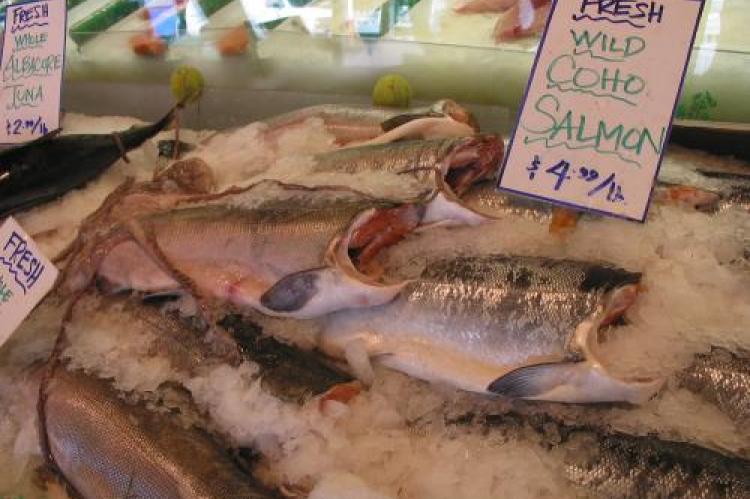Why levels of mercury in fish vary
Why do different fish species have different levels of mercury even though they are the same size? New research supports evidence that mercury in open-ocean fish is naturally occurring from deep-ocean processes. The new findings were published in the Aug. 18 edition of the journal Proceedings of the National Academy of Sciences.
"It has to do with where they are feeding in the water column and what they're eating," said Anela Choy, University of Hawaii-Manoa
Mercury is a natural trace element in the environment that has never been associated with toxicity in Hawaii's ocean fish. But methyl-mercury, an organic form of the mineral converted by bacteria, can be toxic if eaten at high levels by animals or people.
The researchers suspected from other work that deeper-ocean animals and predatory fishes might have more mercury, and studies of almost 200 fish collected from longline and recreational fishermen confirmed that.
Large fish such as bigeye tuna and swordfish that feed deeper in the ocean have higher mercury levels than yellowfin tuna and mahimahi, which live in shallower water, the team found. That is because they are feeding on fish, squid and shrimp with higher mercury levels, Choy said.
Brian Popp, a UH Department of Geology and Geophysics professor said what was surprising was the difference between yellowfin and bigeye tuna.
"The significance is there is more to it than simply the size and age of the fish," he said. "There's an ecological cause to mercury content and the depth at which they're feeding."
Not linked to pollution
The researchers are not sure where mercury enters the food web. There is an assumption that mercury in open-ocean fish is directly related to atmospheric mercury emissions and pollution, but there is no evidence of that.. Studies done in 1971 and again in 1998 on the amount of mercury in Hawaii yellowfin tuna showed no differences despite a 26 percent increase in atmospheric mercury emissions.
The researchers are not sure where mercury enters the food web. "It makes sense that it enters down in deep waters, but we haven't actually looked at mercury in plankton, for instance, consumed by little fish and shrimp. We have to look at lower levels of the food web."
Kaneko said there is substantial scientific evidence that high levels of selenium in ocean fish counteract toxic levels of mercury. Selenium, also a natural element, has antioxidant functions and is known to bind to mercury, he said. "When those two elements bind together, they're biologically inert.


